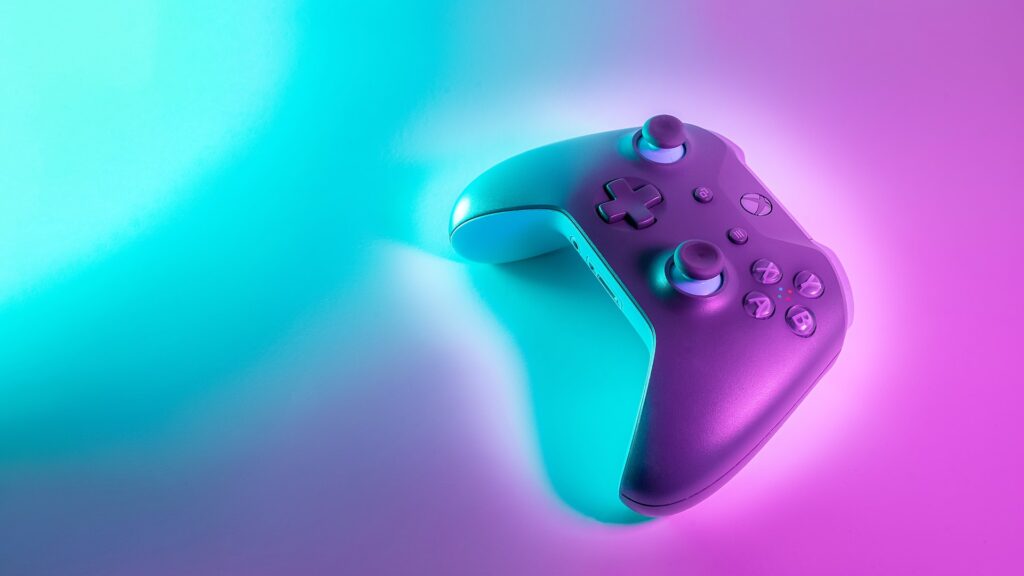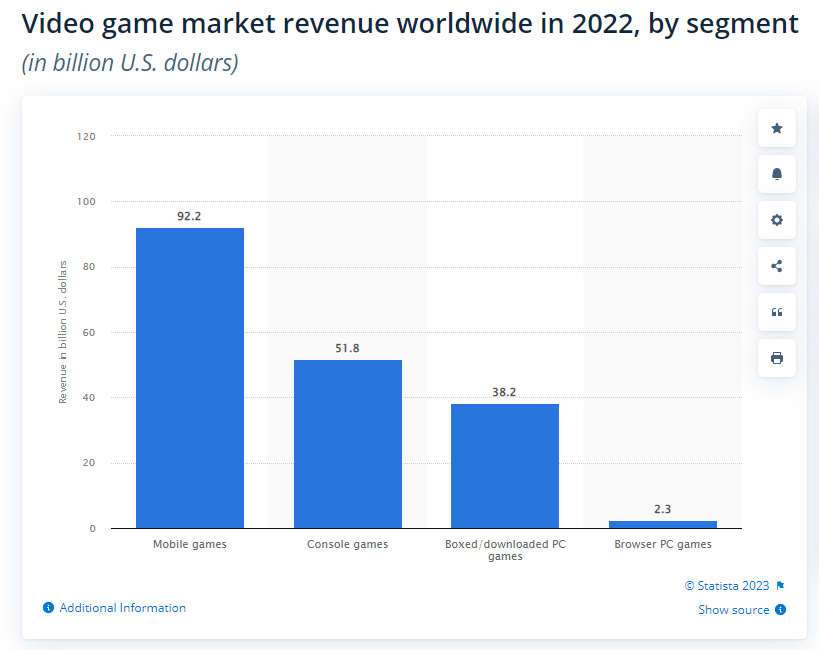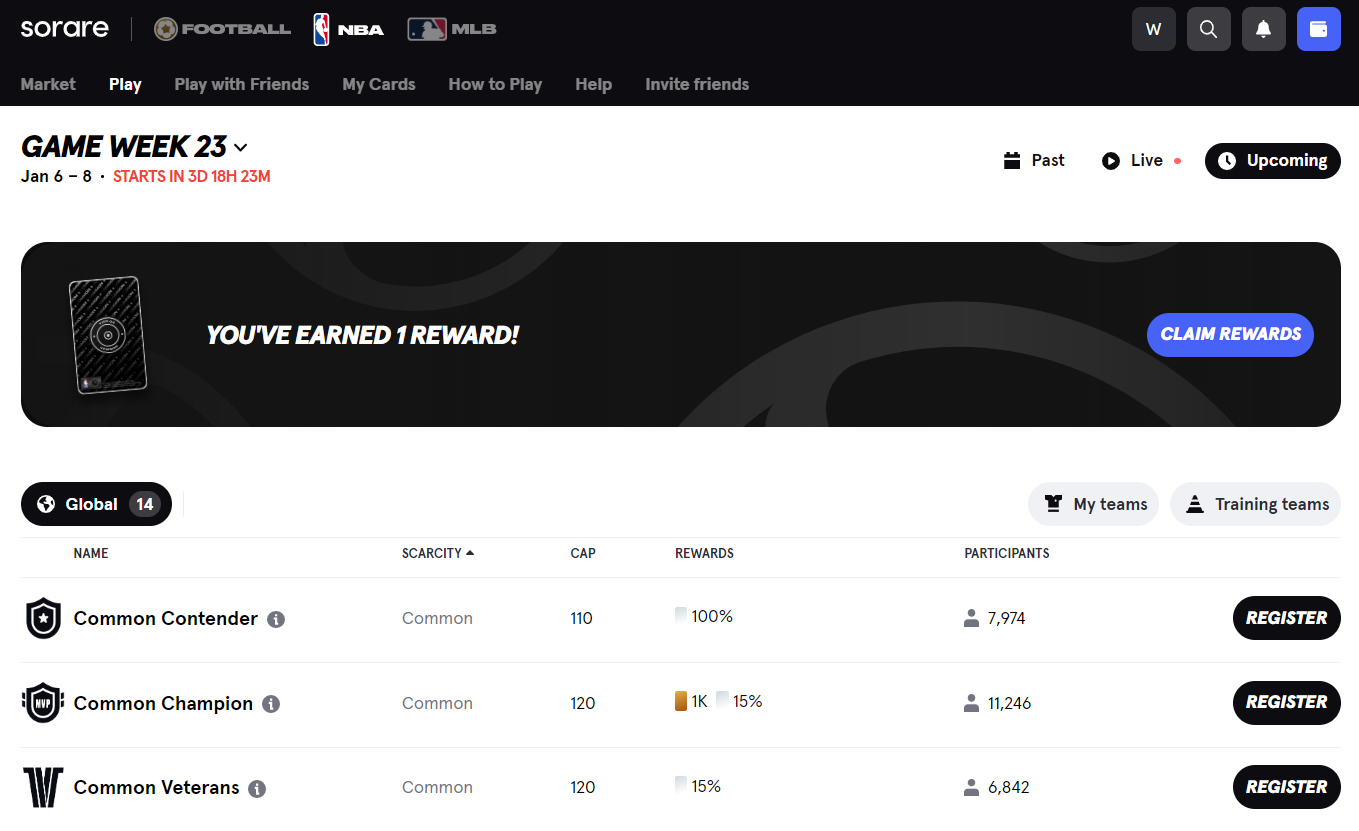8 web3 gaming themes for 2023 🕹️
1) Deeper, richer gameplay
What're you seeing out in the Arena today?#AxieOrigins pic.twitter.com/OdHenbHsbF
— Axie Infinity (@AxieInfinity) January 2, 2023
One reason people love games so much? They allow us to test and hone our skills.
Nowhere is this truer than in games that have lots of depth, i.e. they offer a rich variety of tactical and strategic gameplay possibilities. Anything from Chess to Hearthstone are examples here.
The NFT gaming ecosystem is growing faster than ever now, but to date many of its early titles have felt “flat” in lacking much to do and thus offering players little in the way of tests of skill. One project working in the right direction here right now is Axie Infinity.
The Tiny Fan Generator. Potentially the most meme Aqua build out there, the Exodia of Aquas if you will. Utilizing deck-thinners, Sticky Octopus on Clear so that Goldfish always has a trigger card, and just constant fragment generation.#BuildTheMeta #AxieOrigins @AxieInfinity pic.twitter.com/MQhggOBWmJ
— Xero.ron | MT8 (@xero_mt8) December 24, 2022
In April 2022, Axie creators Sky Mavis unveiled Axie Infinity: Origins, an optimized version of their original tactical card battler game that introduced card updates, a charms and runes crafting system, and real-time combat. As you can see from the tweet above, these new elements allow players to enjoy a lot of depth with unique, custom-tailored playing styles.
Of course, Axie Infinity: Origins is still a work in progress itself, but I hope to see more projects following its lead in “going deep” in 2023. If you’re interested in learning more about this game in particular, check out its basics in this Sky Mavis guide.
2) New mobile releases
This is the future of mobile gaming in web3 @TheTreeverse 🌱 pic.twitter.com/Ql9dQU13t7
— Brycent (@brycent_) January 2, 2023
A decent smartphone is more affordable than a computer or a gaming console, so mobile games are great for accessibility.
One thing I’ve always really enjoyed about Axie Infinity was how you could play it on Android devices (with iOS support coming soon, too), and there’s no doubt we’re going to see more NFT games emulating this approach going forward as mobile gaming activity keeps rising to new heights.
One project I’m watching on this front right now is Treeverse.
A mobile MMORPG built on Ethereum and headed up by Endless Clouds and Loopify, Treeverse is currently in limited pre-alpha testing. However the early videos from this testing reveals the makings of a game that not only looks pretty but also looks downright fun in my opinion.
Bringing fun to more people, and more people into the empowering applications of crypto, is the lodestar for mobile NFT games. I’m really interested to see how Treeverse and other mobile titles like it progress accordingly.
3) Gasless gaming
We felt that way too, so we built Pirate Nation
— Pirate Nation (@PirateNation) December 24, 2022
Our beta is 100% on-chain, has 0 confirmations & $0 gas fees. We push push the limits of web3 tech
🔸Play: https://t.co/HJPzPLb4JI
🔸Learn: https://t.co/Lpfj4jvj8q
🔸Chat: https://t.co/p1Q0ovrpJg
🔸Recruit: https://t.co/UEipBsSeQC pic.twitter.com/4bpGhXDOqw
Games with lots of on-chain elements can come with lots of transactions and wallet signatures.
Lots of transactions and wallet signatures = poor user experience.
As such, a new NFT game that’s demonstrating how to provide gasless UX is Pirate Nation, an on-chain adventure game built on Polygon. The project uses a game wallet system that allows Pirate Nation to cover transactions behind the scenes so players don’t have to pay for gas or sign any transactions mid-game.
Here’s hoping other web3 games start experiment with this superior UX approach, too!
4) The Arbitrum gaming invasion
Arbitrum has been the largest and most popular layer-two (L2) Ethereum scaling solution for a while now.
Of course, affordable and fast infra is ideal for NFT games. This reality, combined with all the advances yet to come for Arbitrum, makes this L2 fertile ground for a web3 gaming boom.
Additionally, projects like Treasure DAO have already done much to bring the foundations of a teeming NFT scene to Arbitrum, so the fun looks like it’s just getting started here. That’s literally true for a title like The Beacon, a free-to-play RPG that just had an explosive launch and is poised to bring considerable activity to Arbitrum going forward. This is just a taste of what’s to come for this L2, I think.
Over the past 2 weeks @The_Beacon_GG surpassed:
— Arbitrum (💙,🧡) (@arbitrum) December 9, 2022
• 40,000 mints
• 22,700 users
• 20,000 daily active users
With their Discord and Twitter numbers doubling since the beginning of their launch!
And let's not forget that this is just a prototype version of the game! 🤯 pic.twitter.com/SxsnxoWzH9
5) More tournaments
The thrill of competition, the glory of skillful wins, the gain of achievements and rewards, and that sense of belonging to a community of passionate peers. These are the reasons why players find tournaments so exciting.
So when it comes to NFT games, tournaments are absolutely a great way to offer players fun and compelling experiences on a rolling basis, and I’d love to see more of them accordingly.
One project that I think is nailing the tournament approach currently is Sorare: NBA, which lets players build fantasy decks and then register for a variety of different competitions whenever they’d like. Yes please!
6) Flexible crypto-native designs
Sometimes when NFT games push out updates, the game creators will temporarily pause their contract(s) and players will have to unstake or migrate their gaming assets. This isn’t great UX, right.
One game that’s tackling this problem right now is Shattered EON, which is set to launch in April 2023. It’s doing so with the flexible and modular Diamond Standard smart contract approach that allows NFT games (among other use cases) to readily extend and update their projects. I’m all in favor of seeing more of this practical approach in the space.
GM lets start the day with a🧵
— Yush-Dreadnaught.eth (@CrypMania) December 26, 2022
A new era of Web3 gaming with fully on-chain assets that change in value as you progress in the game and a real-time gameplay.
Introducing @ShatteredEON and Diamond Contracts (@eip2535)
Dive with me into this exciting new gaming experience.
1/12 pic.twitter.com/e4GPeFpqJ8
7) More on-chain game engine experiments
By “on-chain game engine,” I mean a series of smart contracts that are created to power a game’s backend indefinitely on a blockchain like Ethereum.
🏴☠️What separates Pirate Nation from other web3 games?🏴☠️
— Pirate Nation (@PirateNation) December 21, 2022
Pushing blockchain technology to its’ limits.
We've developed an on-chain game engine of 25 contracts and have made the experience as frictionless as possible.
🧵 pic.twitter.com/k3A3ZK3aoK
On-chain game engines are interesting because they allow third-party creators to openly build new experiences around and on top of NFT games. This dynamic paves the way to modding, which in turn allows players to actively choose how to want to enjoy and experience their games of choice.
There has been lots of interesting work on this front lately. For example, in recent months we’ve seen Curio, Lattice, and Adam Cochran introduce new on-chain game engines. These are the bloomings of a new field, and the possibilities are wide open here at the moment.
8) No-token games
Practically every NFT game to date has embraced ERC20 tokens in some form or fashion.
The most popular approaches we’ve seen so far have revolved around single-token or dual-token models. The latter splits out governance and utility matters across separate ERC20s, while the former tries to handle all its needs with just one token.
Both these approaches can face major issues, which 0xKepler, one of the great minds in web3 gaming in my opinion, lays out excellently in this thread:
1 token model?
— 0xKepler 🔭 (builder arc) (@0xKepler) December 23, 2022
2 token model?
How about a no token model for web3 games!
🧵 pic.twitter.com/p2aHqS0nb3
As way to avoid these issues, 0xKepler proposes the creation of a no-token model that would rely on “off-chain currency + NFTs for value accrual.”
The idea is that players could “mint NFTs against their off-chain currency,” which would mitigate direct fiat exchanges and thus lessen the financial motivations that can wreck an NFT game when unchecked. I think this is a fascinating approach that can lead to funner and more balanced games. I’ll be excited if we start seeing more projects put this strategy into action, because we definitely need more experimentation in this regard.
The future of fun awaits 👾
If you’re into NFTs and you’re also a gamer, it’s an incredibly exciting time to be on the ground in the NFT ecosystem.
The NFT games scene is still fairly primordial, yes, but in observing here one gets the sense right now that a corner is being turned. Important strides are being made. Where there was once only a few simple NFT game efforts, there are now many such titles in various stages of development and with varying complexity levels.
Indeed, the possibilities and the tech are opening up. The gameplay is getting richer, the UX is getting better, our collective infra and collective knowledge are improving in all directions. We’re still far from solving everything in this sector, that’s for sure, but my hope and forecast as an avid gamer and NFTer is we’ll see no shortage of NFT gaming projects continuing to make significant advances in 2023!





